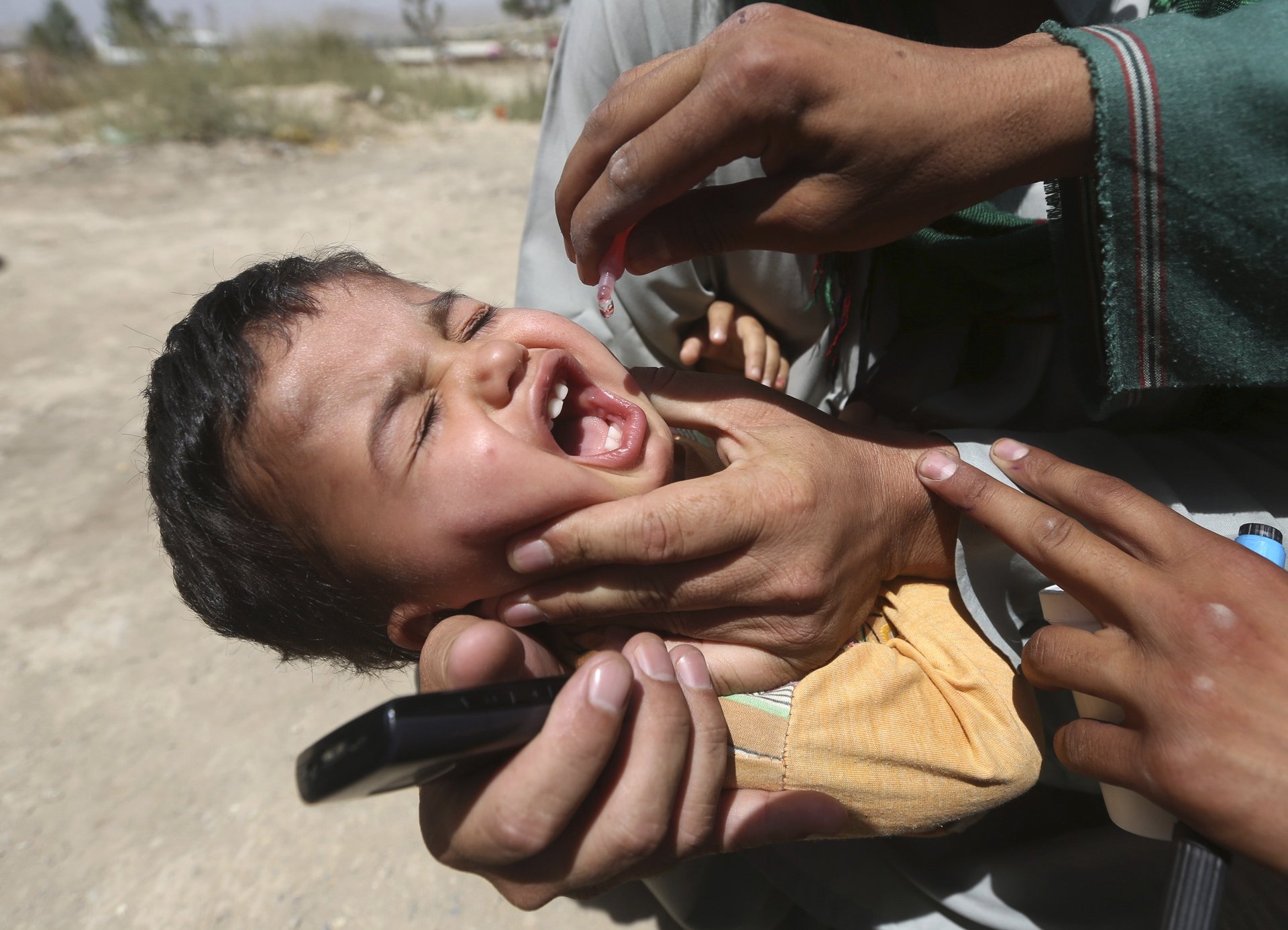Vaccinating a child in a poor country costs nearly 70 times more than it did in 2001
The cost of immunizing children against life-threatening illnesses in poor countries has gone through the roof. According to Doctors without Borders (MSF), a basic vaccination package cost $0.67 in 2001. By 2014, the bill grew to $32.09 for boys, and $45.59 for adolescent girls (who are also immunized for human papillomavirus). For girls, that’s a jaw-dropping 68-fold increase.


The cost of immunizing children against life-threatening illnesses in poor countries has gone through the roof. According to Doctors without Borders (MSF), a basic vaccination package cost $0.67 in 2001. By 2014, the bill grew to $32.09 for boys, and $45.59 for adolescent girls (who are also immunized for human papillomavirus). For girls, that’s a jaw-dropping 68-fold increase.
To be fair, twelve diseases, (including rubella, measles and pneumococcal diseases) are now covered versus just six in 2001. But the increase in the price countries are being asked to pay far outstrips the actual cost of the added vaccines, reports MSF.
What’s more, prices vary significantly by country, often hitting poorer states the hardest, said MSF. “We have an irrational situation where some developing countries like Morocco and Tunisia are paying more for the pneumococcal vaccine than France does,” said Kate Elder, the group’s vaccines policy advisor, in a statement.
In fact, the relatively new pneumococcal vaccine is among the most expensive, accounting for almost half of the cost of the basic vaccination package in the poorest countries. MSF calls on the drug’s makers GlaxoSmithKline (GSK) and Pfizer to cut the cost of the vaccine to $5. Both companies say that the price of their vaccines mirrors the cost of production.
The cost of Prevenar 13, Pfizer’s vaccine, “reflects the fact that it is one of the most complex biologic products ever developed and manufactured,” the company said in a statement. GSK said their vaccine “essentially combining 10 vaccines in one,” and is “provided to developing countries at a substantial discount to western prices.”
The world’s poorest countries aren’t always the ones hardest hit by high vaccine prices. That’s because they are covered by Gavi, an international “vaccine alliance,” that funds immunization. It’s the states in the middle, like Macedonia or Morocco, that don’t qualify for Gavi, which get squeezed.
Ironically, as the economic outlook in Gavi-subsidized states improves, the program starts to get phased out. In fact, more than a quarter of the original 73 countries supported by the alliance will have their funding cut in the near future. For Indonesia, that means its current new vaccine costs of $2 million in 2012, will increase to $32.3 million in 2018 after it loses its Gavi subsidies. For Angola, the bill soars from $2.3 million to $34.5 million.
The problem is, with such hefty price tags, the vaccines remain unaffordable, leaving countries scrambling to find additional funding to sustain their programs.